Cancel
Tools & Options included in
MacDraft 764 Bit
MacDraft Professional offers a comprehensive set of intuitive and precise vector tools and options for architectural drawing, floor plan layout, mechanical drawing, topography and more. It has never been easier to design and layout your 2D CAD designs and MacDraft Professional’s vector tools and options give the intuitive and familiar feel of an easy to use 2D CAD vector app.
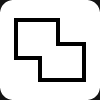
Add (Union)
Adding two simple straight edged shapes, that are intersected (overlapping), creates a combined shape that can have a fill and stroke attribute assigned. However, creating more complex objects by adding different intersecting (overlapping) shapes together, allows you to be more creative with the objects you are drawing. This gives you the power and control to create more custom shapes, quickly and easily.
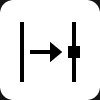
Add/Delete Handles
It’s sometimes useful to add handles to an object before editing it. Handles can be added to lines, rectangles, polylines, polygons and freehand shapes. In addition to the creation of new handles, you can use this feature to remove existing handles. This is a useful tool for simplifying lines, curves or shapes, to make it easier for you to edit later. You can also use this tool to create more complex curves and lines, especially when used in conjunction with the Bezier tool.
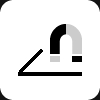
Angle Snap
When working with technical drawings you'll often choose to work with particular angles when drawing your lines. MacDraft gives you the ability to set an angle snap value, which basically locks the angles to the degree increment you select. This is a great option for when wanting to keep all of your angles set to increments of say 5 degrees or 10 degrees. The list of snapping angles is extensive and covers a range between 1 degree and 45 degrees.
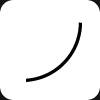
Arcs
There are 4 main arc tools in MacDraft which are Arc by Radius, 3 Point Arc, Elliptical Arc and Concentric arc. Arc by Radius allows you to draw an arc defined by the length of its radius. The 3 Point Arc lets you create an arc by defining 3 points in which it should be drawn through. The Elliptical Arc gives more control over the width and height of the arc. The Concentric Arc lets you create a new arc inside or outside offset from an existing arc.
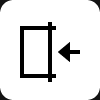
Attach
Join the edges of open objects together at their end points. Draw a combination of lines, curves, arcs etc, where their vertices coincide, and join them together to create custom and complex shapes that can be filled and have a stroke applied. A useful tip is to turn on the ‘Snap To Object option’ and make sure the end handles coincide by dragging them over the end point you want to coincide with, and the cursor will snap in position for you. This will help you to make sure the vertices are overlapping correctly, and will make attaching the vertices quicker and easier.
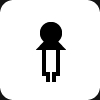
Attribute
The attributes tool allows you to copy the entire set of attributes assigned to an object and place them on another, at the click of the mouse. With the Attribute tool selected, hold down the option key and click an object. Locate the object you want to copy attributes to and click on it. With the tool selected hold the Shift key down and click the object to show the apply attributes dialog. The Attributes tool includes some attribute options that can be accessed by holding the ALT (Option) key down on your keyboard and clicking the tool.
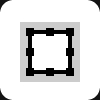
Border Options
When drawing shapes it is often important to be able to define how you want the border to be positioned and the style of the line ends. MacDraft allows you to choose to position the border central to the bounding frame, inside or outside the bounding frame. In addition to can choose from two line end styles, so that you get the look you want from your shapes.
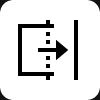
Break
Use the break tool to break your objects into smaller components such as lines, curves, arcs and shapes. This is a great way to edit complex objects. Breaking custom objects and shapes have different outcomes. Shapes split into lines and arcs, but custom objects will break into lines, curves and arcs, this means that more complex shapes will create more broken objects than simpler shapes. For example a rectangle will be broken in 4 simple lines, whereas a solid shape that contains straight lines and bezier curves, will be broken into more smaller lines arcs and curves.
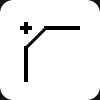
Chamfer
Create a defined beveled corner at the intersecting point of 2 selected lines. There are 3 main options for the Chamfer tool, which are Automatic Trim, Manual Trim and No Trim. With automatic trim, the chamfer is drawn as defined and any overlapping extra line segments are removed. Manual trim means the chamfer is drawn and the lines are broken at their intersection with chamfer. The no trim options means chamfer is drawn and the original lines remain intact.
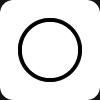
Circles
There are 6 main ways to draw circles, which are Circle by Diameter, Circle by Radius, 3 Point Circle, Diagonal Ellipse, Centered Ellipse and Concentric Circle. The Circle by Diameter draws a circle defined by its diameter, drawn from the corner. The Circle by Radius creates a circle defined by its radius, drawn from the center. The 3 Point Circle draws a circle defined by the 3 points in which it should be drawn through. The Diagonal Ellipse places an ellipse defined by its width and height, drawn from the corner. The Centered Ellipse creates an ellipse defined by its width and height, drawn from the center. The Concentric Circle draws a new circle inside or outside offset from existing circle.

Colors
MacDraft includes a fully featured color system, that allows you to not only add fills, strokes and parallel line fills, but also allows you to create your own colors and store them in an easy to access swatch panel. New colors and editing existing colors is controlled by the familiar system color picker, making it easier and faster for you to choose your desired theme. You can fill all shapes and closed objects, as well as text and parallel lines. In addition you can apply any of your colors to the strokes independent of the fill colors.
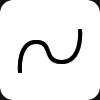
Curved Lines
There are 2 main curves included in MacDraft and both have powerful uses in any type of design. The curves available are Bezier and Spline. The Bezier curve can be used to draw complex, creative and unique shapes by combining a mix of straight lines and curves all controlled by unique and precise handles. The Spline curve allows you to draw a curve that passes through a particular number of custom defined points on the drawing. This is great tool for creating a more precise curve along a set of defined points. The bezier curve works in a similar way to the familiar vector tool, know as a Pen. Its great for all types of design work from vector illustration to complex and precise engineering layouts.
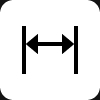
Dimensions
At the heart of MacDraft is its smart and precise units system, which makes dimensioning your drawings quick and easy. Dimensions are the best way to communicate sizes to the person viewing the drawing, not only that, they are integral to any CAD layout that is being produced for real world purposes. We have designed a simple, yet powerful dimensioning system that allows you to dimension any part of your drawings at the click of the mouse.... It’s really that simple! In addition, for even more control, you can format your dimensions, by controlling witness lines, text position, labels and more.
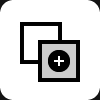
Duplication
When working on your drawings you will often need to duplicate already drawn objects and groups to use elsewhere in the document. MacDraft includes the usual duplication options and some advanced ones. The standard Duplicate and Duplicate No Offset allows you to quickly duplicate your selection offset from the original or in exactly the same place. The advanced options allow you to duplicate objects using a linear or circular method, giving you the ability to orientate your duplicates in complex ways. For example, use the circluar duplication to create a mechanical gear, by duplicating the teeth around its center. You could even use the linear duplication to create a grid of rectangles. In addition to this, you can also move or make a copy of a selection and place it on another layer, with or without an offset using the Move option.
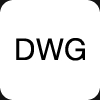
DWG Support
DWG files are supported up to version AutoCAD 2019 (AC1032), allowing you to save, edit and open to this DWG file version. Opening DWG files allows you to control how they are viewed, giving you all the control you need when working with DWG file content. DWG support gives you the confidence that MacDraft will work with files you have recieved from other applications using the DWG file type.
Learn more about the MacDraft’s File Format Support ⟩
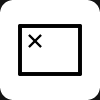
Edit Datum
When resizing objects the datum point is the origin MacDraft uses as a reference. Included is the ability to move the datum point on an object or group. You can move the datum to any of the handles for a fixed location or alternatively you can move the datum to a free area anywhere in side the objects frame. This gives you complete control over how your objects and groups are controlled and manipulated in your designs.
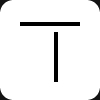
Extend Line
If you have a number of over lapping lines or lines that don’t quite meet, the extend line options allows you to extend single or multiple lines to another. Lines can be extended to meet points, a reference line or an existing line. Extend 2 lines to meet at their end points, along their existing path. Select single or multiple lines and extend them to a defined reference line. Select single or multiple lines and extend them to meet an existing line.
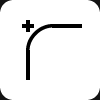
Fillet
Create a defined rounded corner at the intersecting point of 2 selected lines. The fillet tool has 3 available options, which are Automatic Trim, Manual Trim and No Trim. With Automatic Trim the fillet is drawn as defined and the extra line segments are removed. With Manual Trim the fillet is drawn and the lines are broken where they intersect with fillet. The No trim option draws a fillet as defined and the original lines remain intact.

Freehand Lines
The freehand lines offer a traditional method of drawing multi line shapes quickly. Draw an open freehand shape, which is like drawing with a pencil on the screen to create a simple set of lines. Draw a closed freehand shape, similar to drawing with a pencil on the screen to create a closed set of simple lines. In addition you can use the Smooth and Unsmooth menu items to alter the set of lines for more precision.

Gradients
Gradients are at the heart of any graphical and vibrant layout. MacDraft has support for the creation and management of Linear and Radial gradients. Create vibrant color blends for use in vector illustration, colorful floor and garden plans and much more. The gradients can be stored, edited and duplicated making it easier for you to manage your swatches and share them throughout all your drawings. Create vibrant color blends with multiple colors using the traditional linear method, with or without angles or create unique color blends with multiple colors using a radial blend type. Change the position of the radial centre for glowing styles. All gradients can not only be applied to the fill attribute of an object, but also to the stroke. This means you can create nice looking lines, curves and borders that take on the look and feel of the gradient.
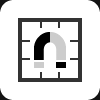
Grid Snap
Being able to snap your objects to the grid when you are drawing or moving is important, especially when working with precise documents and layouts. MacDraft gives you the ability to define the grid snap value giving you the confidence that your items and objects are always set to the increment you have defined. In addition the grid snap value is dependent on the unit type you have selected giving you absolute control over your obejcts and their precision.
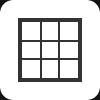
Grid Type
MacDraft gives you the option to choose between 2 types of grid. One being the traditional dotted grid and the other being a more obvious square grid. Both of the grid types are for reference and work with the Angle Snap and Grid Snap options. You can switch between the grid types at any point while working on your documents.
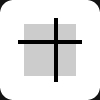
Document Guides
Guides are a great way to control the position and alignment of your objects across a page. They can help when creating layout documents, CAD drawings, engineering plans and more. You can add guides either by holding the Command key down and dragging from the rulers to a location, or for precise guide positioning, you can use the add guide options in the Options menu. Moving guides is simple, you can cursor over a guide while holding the Option and Command key down and drag it using the mouse. To delete a guide, you simply drag it so that it either overlaps the rulers or until it’s outside the document area. You'll also be able to change the color of your guides.

Hand (Pan)
The traditional and familiar Hand tool is used to pan and navigate the drawing. You can move the view in the document in various different ways. Pan with the Hand tool to drag the view in the document window freely. Scroll using the scroll bars to move the view vertically and horizontally.

Images
MacDraft supports the adding and use of images throughout your documents. There are a number of image formats supported including the familiar PNG and JPEG formats. In addition, MacDraft can handle the transparent PNG images, allowing you to add an image that has a transparent background and apply a fill color to it. This will add a background color of your choice to the selected image. You can also export your document to various image formats. In addition MacDraft allows you to resize your images either by using the resolution, pixel width or unit width. You can also change the surrounding canvas and crop the images in a non-destructive way using the Command and Shift keys. Non-destructive cropping means you can set the images back to the orignal without re-importing the image.
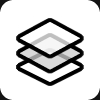
Layers
Take full control of your drawings and manage your layers using a fully functioning and intuitive Layers panel. You can create, move, delete and manage all of your layers in one place. In addition you can choose to use different scales for individual layers. Layers are a great way to put your drawing together, for example, make one layer for your dimensions, a layer for your walls and a layer for your furniture. You could then hide and show the layers you want depending on what you wanted to see. You could even create multiple furniture layers, each with a different furniture layout. With the all new Layers panel you will find managing your drawings faster and more efficient, giving you a single place to control all of your drawing components.
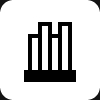
Library Items
MacDraft allows you to create your own library of graphics. This is a great feature that can save you hours and hours of time. It’s quick and easy to create your own libraries. Simply draw your symbol, graphic or object in your document, use the Library panel to create a new blank library, then drag the items you wish to store from the document window into the Library panel. Your new items will now be stored in that library, meaning you will never have to redraw them again, saving you hours and hours of precious time and resources. In addition, you’ll find that we offer a range of add-on content in the form of libraries, that you can use with the creation of your documents. We have done all the hard work for you, so you don’t have to worry about creating graphics for floor plans or layouts. Symbol libraries will have you laying out your designs in minutes, giving you more time to show off your design skills!

Lines
To make it easier to draw your lines, MacDraft includes a number of straight line drawing tools. Unconstrained Line draws a simple line, free from angle snap. 90, 45, 30, 15 and 5 degree lines draw a straight line constrained to their corresponding degrees. Hold Shift to unconstrain. When using the unconstrained line tool you can hold the Shift key down during drawing to constrain to 45 degree increments. When using the fixed degree constrained lines, holding the Shift key will free the line from the constraint while drawing.
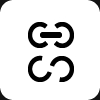
Link/Unlink
Linking objects can be very important in any type of drawing or layout. You can use this option to link 2 or more intersecting vertices together so that when they are moved or resized they still remain linked. This means you can create chained items that are all interlinked and are affected by each other’s sizing and movement. Dimesnions are automatically linked to the vertices of the objects you assign them to. You can always unlink items whenever you want.

Load Layer
There may be times when you want to get the content from a layer in another document into the current drawing you are working on. MacDraft gives you the ability to load the content of a layer from one document into another, which could save you hours and hours of drawing time.

Lock/Unlock
At any time you can lock or unlock a selection. Locking a selection will mean that you cannot edit its, size, position or any of its attributes. This can be very useful when working on complex drawings, where some items that are on the same layer need to remain unchanged. You can also control the duplication of locked and unlocked items at any time. Locked items have a different color handle making it easier for you to see what items are locked and which are not.
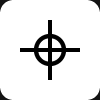
Marker
Use to add registration-type markers to your drawings at the click of the mouse (click multiple times to add more). The registration markers are vector drawn and therfore maintain their quality no matter the size, scale or zoom level you are working at.
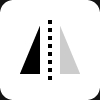
Mirror
The mirror option is an advanced version of the standard Flip options. Mirror a selected object or group across a defined axis at a specified angle. The result will create a flipped version of the original, replacing it. You can also mirror a selected object or group and create a copy of the original flipped, leaving the original in place. When drawing the reference line for mirroring you can use the Shift key to constrain the angle to 45 degrees.
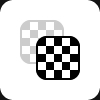
Patterns
Create repeatable color or black and white pixel patterns for colored flooring and materials. Apply your patterns to the fill of an object and the stroke (line or border). Not only do we provide some basic patterns already created, but you can also create your own patterns and store them or overwrite existing ones using our easy to use pattern generator. All the patterns you have used can also be shared with other documents, simply by copying and pasting an object that has the pattern attached or by storing items in a custom Library. In addition you can paste an image that you have copied into the pattern editor, and MacDraft will create the pixel work for you. MacDraft’s pattern creator will save you hours of drawing time and allow you to create some impressive textures for just about anything.

Parallel Lines
The backbone of any layout application is the ability to draw parallel lines for the creation of walls and borders. MacDraft includes a number of parallel line tools which are Single Parallel Line, Parallel Polyline, Parallel Polygon, Extrude Parallel Line and Extrude Parallel Polyline. Single Parallel Lines draw a single set of straight parallel lines. Parallel Polylines draw an open set of parallel lines consisting of 2 or more sides. Parallel Polygons draw a closed set of parallel lines consisting of 3 or more sides. Extrude Parallel Lines draw a single parallel line extruded from an existing straight edged object. Extrude Parallel Polylines draw a parallel polyline extruded from an existing straight edged object. In addition you can choose the alignment, end caps, line joints or thickness in the parallel line tool options.
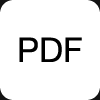
PDF Support
MacDraft gives two types of PDF export, one built in and the other as part of the system Print options. Export PDF will allow you to export only the content of the document for precise image creation. Print to PDF will give you the ability to save the whole page as a PDF including any blank space around the content.

Pointer (Arrow)
The default selection tool in any vector app can be used to select objects, groups and text objects in your document. Select the handles of objects, groups and text and drag to resize them; select and move your selections easily; or even drag out a selection frame around the objects you want to select. The Pointer in MacDraft also includes a show size panel that gives you a reference of size and position as you are drawing, resizing and moving objects.
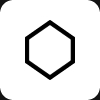
Polygons
MacDraft includes a number of polygon tools all designed to make it easier to create the shape you want. Edge-Edge Polygon creates a polygon from edge to edge defined by a number of sides with equal length; Center-Edge Polygon draws a polygon from center to edge; Vertex-Vertex Polygon draws a polygon from vertex to vertex; and Center-Vertex Polygon draws a polygon from center to vertex. You’ll also find the powerful and easy to use Irregular Polygon tool to draw complex, closed shapes of 3 sides or more made up of straight lines. Also with the Polyline too you can draw complex, open shapes, consisting of straight lines. These tools can all be constrained to 45 degrees while drawing, by holding the Shift key down.
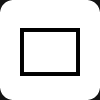
Rectangles
There are 2 main ways to draw a rectangle in MacDraft. Rectangle from Corner allows you to draw a square cornered rectangle from it’s corner and the Rectangle from Center lets you draw a square cornered rectangle from its center. Hold down the Shift key to constrain the shape as you draw. If you draw a rectangle and us the break tool, you can split it into its individual lines. You can also edit and add extra handles to the rectangle for more complex shapes, using the add/delete handle tool. You can also draw rounded corner rectangles with proportional, constant or elliptical rounded corners.
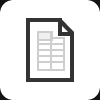
Reports
MacDraft's database features let you quickly and easily assign information to objects, perform Find/Replace operations, and create custom reports. Its report functions allow you to extract important information from your drawing, such as area, count, height, width, length, and perimeter. Reports can be displayed on screen to show the current status of your drawing or printed. As MacDraft's database is integrated, changes made to the drawing will be updated automatically in the report system.
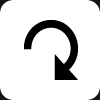
Rotation
There are 3 ways to control the rotation of selections in MacDraft each with their own level of precision and accuracy. The Rotate Tool freely rotates objects, with three levels of precision to a desired increment; The Rotate Options let you define the numerical values for the rotation of selected objects; and Rotate by 90 quickly rotates your selected objects by a 90 degree increment.
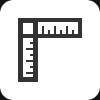
Rulers
MacDraft provides horizontal and vertical rulers to help you lay out objects in your document. You can set the ruler to use different increments (points, inches, centimeters) by choosing the unit type in the Scale & Units. You can also move the zero point to define a new origin in the drawing. Rulers are also used to place guides in the document. In addition you can set the rulers to be standard or scaled at any time when working with your documents.
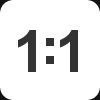
Scale & Units
Scales are a great way to be able to create larger drawings and fit them onto smaller pages, while still maintaining the real world sizes of your objects. Select from a set of default scales, unique to the units you’re using. In addition you can create your own custom scales and add them to the list. Choose from a variety of unit types in both English and Metric units. MacDraft has a smart unit system that will convert unit sizes for you. If you are working in inches, but type a millimeter value, it will calculate and display the conversion for you.
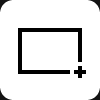
Selection
There are various ways to control the selection of objects in MacDraft. You can use the inclusive and exclusive marquee selection tools to draw a frame around the objects you wish to select; you can use the arrow tool to select the objects you want by clicking them (hold the shift key down and click to select multiple objects at the same time). An impressive but simple feature included in MacDraft is “Select Special”. This allows you to choose what you are looking to select from a list of objects and only select them in the document. You’ll also find that you can choose to select more than just particluar shapes and objects, you can be more precise and choose to select a particular object, with a particular fill color and line style. The advanced selection options give you the freedom to control your selections, making it easier and faster to make changes to your documents, no matter how complex they are.
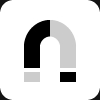
Snapping
Drawing and aligning can sometimes be tricky when working to a scale or on complex designs. MacDraft has various snapping and alignment options to make working with your objects easy and fast. You can control the angle snap when drawing shapes; the grid snap features allows you to control the increments in which your objects are bound to the grid; and object snap allows you to position drawing objects in relation to other objects in the drawing. MacDraft also includes a Smart Snap feature that displays reference lines when you are close to other objects, allowing you to quickly and easily position them. You'll also find that snapping is between layers and drawing, resizing and moving objects can be snapped to guides.
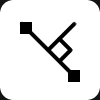
Special Lines
MacDraft offers some special line tools for those tasks that require a little more precision and control. Perpendicular Lines draw lines perpendicular to existing lines and edges of objects; Mid Point Lines draw lines from the mid point of existing straight edges or circular arcs; End Point Lines draw lines from the end point of existing straight edges or circular arcs; and Center Point Lines draw lines from the center of existing objects. In addition Tangent from Line draws a tangent line from a circle or arc to a specific point on the drawing and Tangent Between Line draws a tangent line between circles and arcs. The final tool is the Offset Line tool, which creates a single line parallel and offset to the existing lines or edge of object.

Star
There is a shape drawing tool, which allows you to draw stars. This tool also offers options for the control of the attributes within the star such as how many points etc. Stars are a great way to create badges, labels, markups and even triangles if you want to. In addition you can ungroup the drawn star and edit the handles yourself to create more custom and complex shapes. The star shapes can then be controlled with color fills and strokes.
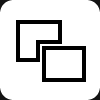
Subtract
Subtracting one straight edged shape from another, that are intersected (overlapping), creates a new shape with the front most shape removed from the back one. Creating more complex objects by subtracting different intersecting (overlapping) shapes allows you to be more creative with the objects you are drawing, which gives you the freedom and control to create complex and unique shapes easily.
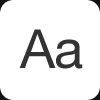
Text
Add text to your drawings with our easy to use Type tool, giving you all you need for marking up and annotating your designs with those important comments and notes. Take your text to the next level, by customizing the fonts and styles you use with the text attributes and add your own fonts to the system and use them in your drawings. Adding text to your designs, creating text layouts or text in page layouts has never been easier.
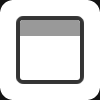
Toolbar
The MacDraft Toolbar provides quick access to commonly used functions in the application. The toolbar can be customized at any time to display the options you prefer and in addition you can control how the toolbar items are displayed, such as with titles or without. You can also hide and show the toolbar at any time. We have set a default number of toolbar items that we think are commonly used, but of course you can change them at any time.
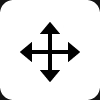
Transforms
There are a number of familiar transform options in MacDraft. Numerically move your objects to different positions and from one layer to another; Rotate numerically or freely and flip your objects horizontally and vertically; Scale objects up / down numerically, to make it easier for you to keep control over resizing with Expand and Contract options; and Bring objects to front, send them to back and move them in between each other. You can also control the grouping and ungrouping of selected objects.
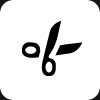
Trim Lines
There are 2 main trim options built into MacDraft being Automatic and Manual. Automatic Trim allows you to create a break in 2 intersecting lines at the point of intersection. Automatic trim will remove the shorter part of the lines that result from the trim. Manual Trim works the same way as Automatic Trim, but will leave all of the lines that result from the operation, so that you can remove them when you want to.
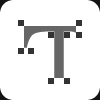
Vector Text
MacDraft allows you to convert your text elements to 100% vector graphics. This will give you the ability to edit the attributes of the text element as if it was a normal vector object. In addition it will allow you to manipulate parts of the text to create your own unique text styles for personal branding and logo design.
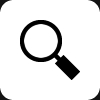
Zoom
Use the zoom tool and click to zoom in and out of certain areas of your documents. You can also draw a zoom frame around the area of the drawing you would like to focus on and the window will zoom to that specific frame. In addition you can also zoom in and out by using the View menu Zoom options and the zoom pop-up menu in the toolbar.
MacDraft Pro 7.0
System requirements:
Machines running MacOS 10.11 (El Capitan) or later.
Includes full Support for MacOS 11 (Big Sur).
Available through our web-store from
$399.00
£339.00
€379.00
You can also upgrade from previous versions